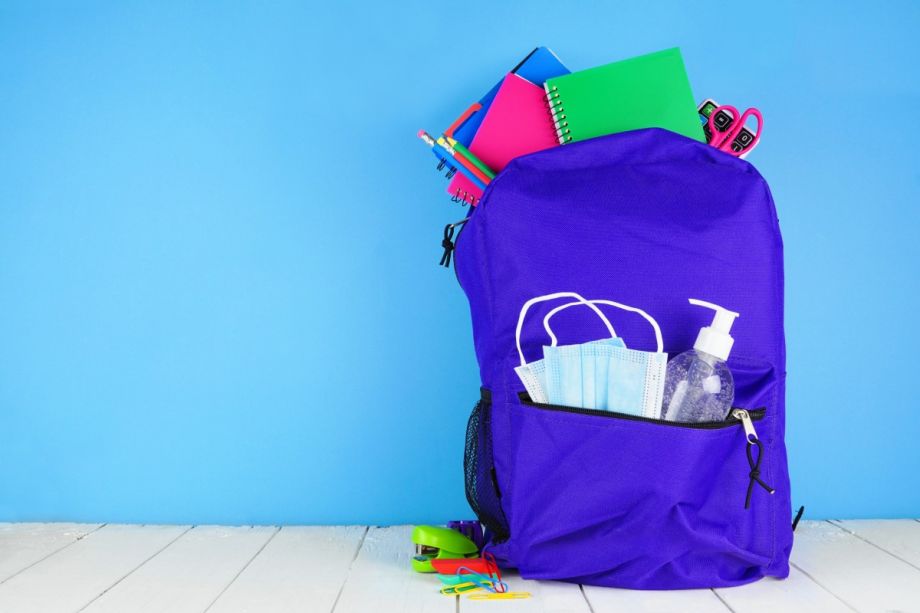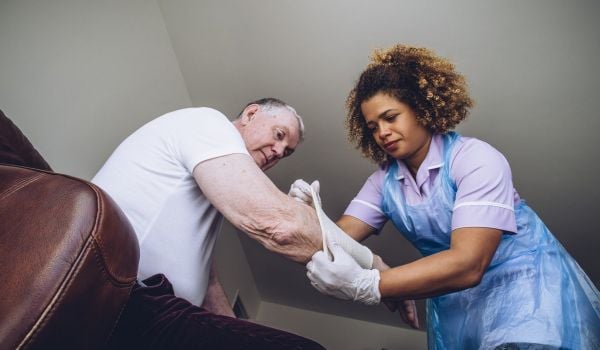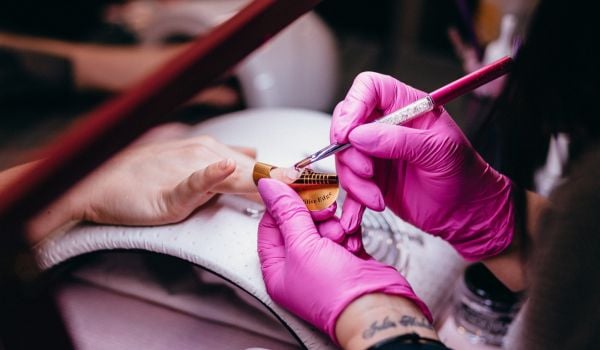When COVID-19 closed schools across the country, many parents worried about how their children would fare without physically seeing their teachers. Less talked about is how children fare without physically seeing a school nurse. For many students, a school nurse is the first or only medical professional a student sees.
The 119 school nurses positions throughout Columbus City Schools in Columbus, Ohio, moved their work from school buildings to virtual clinics. That’s because even before COVID-19, school nurses were helping families find physicians that take their insurance, offering mental health support to teens, and having medication shipped directly to school to help students adhere to doctor’s orders. “One of our tenets is ‘making things happen’,” says Kate King, the Columbus City School District school nurse supervisor. The school district already had a pandemic plan in place after the 2009 swine flu outbreak; once COVID-19 spread, school officials hurried to put the plan into action.
“Once we knew [the schools] were closing, we knew we needed to move quickly,” King says.
Here’s how Columbus City School District school nurses are keeping students healthy in a time of social distancing.
Returning school-stored medication to students.
Nationally, four to six percent of school-age children receive medication on a typical school day, with prescriptions ranging from the asthma preventative Advair to insulin for Type 1 diabetics. “When the initial lockdown and school closures occurred as recommended by public health, most districts had a day or two with schools open in which they could arrange to get critical medication and medical equipment sent home or picked up. This critical medication would be things like insulin or other items that do not last long,” says Deborah Strouse, a disaster preparedness in schools expert and the Emergency Preparedness Nurse Training Coordinator for Columbus City Schools. “If students were absent and these were not picked up, many nurses reached out to families to help them make other arrangements.”
For students with asthma, Columbus City Schools partners with School Based Asthma Therapy (SBAT) which aims to help students adhere to their daily asthma medication regime. The initiative, which sends the medicine directly to the school for easy dispensation, helps children to develop the crucial habit of daily preventative care. “It’s especially important during the pandemic to help our ashmatic student keep their asthma under control,” said Strouse, who adds she helped families by reaching out to help them re-enroll in the yearly program.
Checking-in on students with chronic health conditions
Even before the pandemic, Cathy Diggs, an analyst in Columbus, spoke highly of school nurses. “My son is 13 and has type one diabetes,” Diggs says. “Last summer, his school nurse Carol Lynne traveled with him on an overnight summer camp. She made sure he was safe and had a great time.” After a moment, Diggs continues. “You know, in a hospital, there are 40 or 50 people on a floor, and there are at least three or four nurses. These schools have 300 kids. And only one school nurse. I don’t know how they do it.”
“I have personally listened to parent concerns during the pandemic about either not being able to get an appointment or not being able to get a COVID test, or being too afraid to go out to see the doctor because their child has a serious medical condition. All school nurses are helping with this right now,” Strouse adds. When a parent voiced concern about a child with a chronic health condition, Srouse made an appointment at a very low-volume clinic she knew of so that the child would be the first one seen and have less chance of being around others.
Assisting in the safe distribution of free meals
School nurses within the Columbus County School District visited school cafeterias and briefed food services staff on how to improve safety for staff and families at each distribution site, and answered questions in support of staff regarding safety procedures, social distancing, and PPE, says King.
Stressing the overall importance of health care
Columbus school nurses connected with families over the summer to offer assistance in finding a new healthcare provider when their insurance changed and to help find low- or no cost immunizations. Over the summer, supervisor Kate King launched a 15-nurse team of nurses working on an immunization project. “Right now, the focus is on kindergartners who might have missed their second MMR (measles, mumps, and rubella) booster. The last thing we need is a measles outbreak,” says King.
“We are working diligently to assist and urge families to get back in to their healthcare providers and get that routine well exam, catch up on missed appointments for their chronic conditions, get their immunizations up to date, and get a flu shot,” Strouse says. “I set up emergency action plans for students with asthma, seizures, severe food allergies, sickle cell anemia, cardiac disorders, and many other potentially life threatening conditions.”
Reviewing plans and advocating for more resources.
With estimates that up to 27 percent of children have chronic illnesses and the long-term effects of COVID-19 uncertain, the national need for full-time school nurse staffing could result in a larger conversation about the profession. Only 51 percent of schools meet the recommended 1:750 nurse to student ratio as outlined by the U.S. Department of Health and Human Services’ Healthy People project. A cost-benefit study found for each dollar spent on school nurses, $2.20 was saved in the areas of parent loss of work time, teacher time, and small procedures performed in school rather than in a more costly healthcare setting.
School nurses also can use this time to look ahead and review care long-term plans for students with chronic health conditions, King says. The National Association of School Nurses agrees. In its publication Ideas for School Nurse Activities During the COVID-19 Pandemic, the association argues nurses should “review records of students with chronic conditions who may need 504 [disability] accommodations, individualized healthcare plans, or emergency care plans for the coming year or who are transitioning to a new school in preparation for when schools reopen; and begin the processes now.”
Answering questions and providing reassurance.
School nurses in the Columbus City School District have converted their Google Classrooms into Google Clinic, says Kate King. “The good thing about online meetings is nurses can create digital waiting rooms for students if they find a child needs to have a private conversation,” King adds. This is especially important in high school, where 75 percent of conversations school nurses have with their students is about mental health. “It’s not always appropriate to have those conversations in an open forum,” King explains. “The Google clinics allow nurses to create those private appointments students need.”
The online office hours, which are available in blocks for students, staff, and families, allow nurses to answer questions.“We are communicating privately and individually on a variety of platforms. I did not even use that word – platforms – before this pandemic,” Strouse says. “School nurses are experts in health care, but we are having to rapidly learn how to use a variety of virtual and communication platforms to stay connected and “in touch” with the needs of parents, students, and school staff,” says Strouse.
Supervisor King agrees. “Parents are anxious about how we are going to keep their children safe,” she says. “Nurses are trained to be calm under pressure. There’s a psychological term we use ‘regulate ourselves can help others regulate’. That means if we can stay calm under pressure, we can help the others. Lots of times, people will come to me and say ‘You look so calm’ and sometimes I think, ‘well yeah, but inside, I’m not.’
King laughs and adds, “but that’s what nurses do. We stay calm.”
















